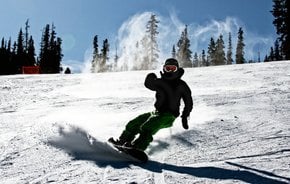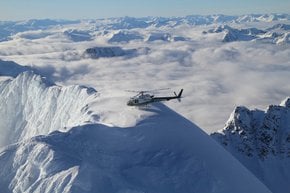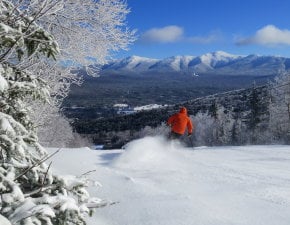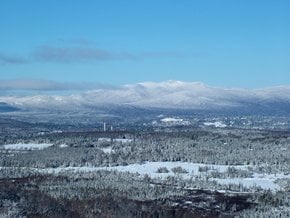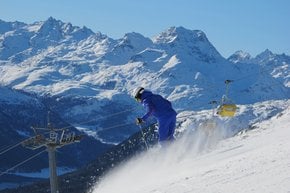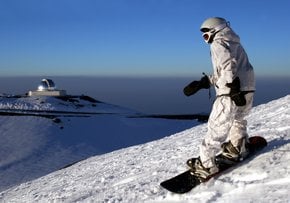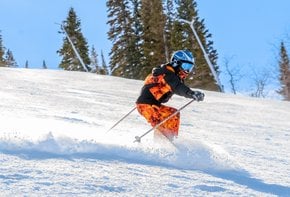Skiing and Snowboarding Mauna Kea in Hawaii 2026
It's not a joke. You really can ski and snowboard in Hawaii
Best time: February–March
While Hawaii is famous for its tropical beaches, the summit of Mauna Kea offers a unique opportunity for skiing and snowboarding. This dormant volcano, standing at 13,796 feet (4,205 meters), occasionally becomes covered in snow, allowing adventurous visitors to experience winter sports in a truly unconventional setting. Though there are no traditional ski resorts or facilities, Mauna Kea remains an intriguing option for expert skiers and snowboarders seeking a memorable challenge.
Best Time to Ski on Mauna Kea
The ideal time to ski or snowboard on Mauna Kea typically falls between February and March, when the summit is more likely to receive significant snowfall. However, the weather conditions can be highly unpredictable. Strong winds, fluctuating temperatures, and rapid snowmelt mean that conditions suitable for skiing may only last for a short window of time. For those determined to take on Mauna Kea, timing is key—watching weather forecasts and being prepared to make a quick trip to the summit is essential. According to weather experts, snow tends to accumulate after large storm fronts pass through, making La Niña winters particularly favorable for snow accumulation.
Skiing and Snowboarding Conditions
Skiing and snowboarding on Mauna Kea is unlike any traditional resort experience. There are no ski lifts, groomed trails, or resort facilities. Instead, skiers and snowboarders must bring their 4-wheel-drive vehicles to transport themselves to the summit. Groups typically take turns driving, as one person shuttles others from the bottom back to the top after each run. This system requires careful coordination and a willingness to endure the rugged, high-altitude environment.
With no official ski patrol, those attempting the descent must be experienced, as the terrain is harsh, and the conditions can change rapidly. The snow often has a strange texture due to intense sunlight, and some slopes can be steep, with abrupt transitions from snow to volcanic rock. Due to the high altitude, altitude sickness is also a risk, so participants should be in good physical condition.
Trails and Terrain
Mauna Kea offers vast terrain for skiing though it is entirely ungroomed and natural. The most accessible and commonly used trail is the Poi Bowl, which offers a relatively straightforward descent. Other notable runs include the Prince Kuhio Trail and Pele's Parlor, but these are recommended for more experienced skiers and snowboarders due to their steeper and more challenging slopes. With over 100 square miles of skiable terrain and nearly 6561 feet (2,000 m) of vertical drop, the area offers plenty of space for exploration. However, the lack of infrastructure means each day on the mountain may only allow for a few runs.
Costs and Equipment
Since there are no established resorts, there are no lift tickets or ski passes required to ski on Mauna Kea. However, the cost of renting a 4-wheel-drive vehicle can add up, especially for those needing to make multiple trips up and down the mountain. Additionally, securing ski equipment rentals can be challenging, so it's advisable to bring your own gear if possible to avoid any disappointment.
It’s also important to note that Mauna Kea holds significant cultural importance for Native Hawaiians. Visitors are asked to respect the sacred nature of the mountain and avoid disturbing the observatories located at the summit. Skiers should be mindful of leaving no trace and not interfering with the work of astronomers.

















